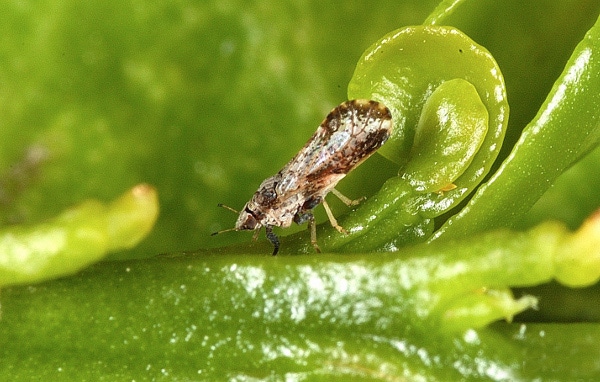
Asian citrus psyllid found in Nogales, Ariz.
A single female Asian citrus psyllid (ACP) found Oct. 6 in a residential grapefruit tree in Nogales, Ariz., is undergoing tests to determine if the insect carried citrus greening disease."We don’t believe the Asian citrus psyllid is established in the Nogales area,” said John Caravetta of the Arizona Department of Agriculture.

A single female Asian citrus psyllid (ACP) found Oct. 6 in a residential grapefruit tree in Nogales, Ariz., is undergoing tests at the USDA-APHIS laboratory in Beltsville, Md., to determine if the insect carried citrus greening disease, also called Huanglongbing disease (HLB).
Test results are expected later this week. APHIS confirmed the insect was an ACP Oct. 7. Nogales is located in southern Arizona at the U.S.-Mexico border.
The insect was found in an APHIS trap in a residential backyard about one-quarter mile east of the International Port of Entry in Nogales.
The ACP is the primary vector of HLB. The dreaded disease kills every citrus tree it infects. The insect was previously found in Yuma County, Ariz. and at various locations in Southern California.
HLB, the most deadly citrus tree disease in the world, is not found in Arizona or California. In Florida, ACP and HLB have caused massive tree losses. Fruit from an HLB-infected tree is unmarketable due to its extremely sour taste and odd size.
John Caravetta, Arizona Department of Agriculture Associate Director and Chief of the agency’s Plant Services Division, says additional trapping in Nogales is underway to determine if the insect was a hijacker on a vehicle, blown in by the wind, or part of an established colony.
“Based on the trapping results so far we don’t believe the psyllid is established in the Nogales area,” Caravetta said. “It was probably a hitchhiker that may have come across in commercial or passenger traffic or even blown in from an area that already has the psyllid.”
Caravetta says insecticide control treatments will only be applied in the Nogales area if an active infestation is found. If that is the case, foliar and drench-applied insecticides would be applied within a 1,200-foot distance around the find.
ADA and APHIS have discussed establishing an ACP quarantine in the Nogales area. Usually a single find does not trigger a quarantine. A quarantine is likely if an active infestation is found.
In addition to the recent ACP find in Nogales, two psyllids were found in passenger carry-ons early this year at the Nogales border crossing.
“This further shows that International Ports of Entry are significant pathways which create additional challenges for border States,” Caravetta said. “This pest has a real presence and opportunity to enter Arizona through commercial and passenger traffic. We keep crossing our fingers that we don’t have an introduction of an adult psyllid with HLB.”
HLB is found in several locations in Mexico. The closest Mexican HLB-infected ACP colony is located about 240 miles south of Nogales in the southern part of the State of Sonora.
41 psyllids
The recent Nogales ACP find brings to 41 the total number of psyllids found in Arizona. Only one find was in commercial citrus (Yuma County). The balance was found in residential areas.
Prior to the Nogales find, psyllids were only found in Arizona in Yuma County, the state’s largest citrus-producing county. Lemons are the area’s top citrus crop. The county’s latest find occurred Sept. 30. An adult female was found in a quarantine area less than one mile from Interstate 8.
“We have not detected anything more than the single adult which could have blown in from commercial or passenger traffic on the interstate,” Caravetta said. “None of the other areas in Yuma County have reported any detection under very heavy and frequent trapping.”
The ACP was first found in Arizona in Yuma County in Fall 2009. ADA and APHIS established quarantines in parts of Yuma County which remain in effect. The quarantines create requirements to move citrus in and out of the area.
The ACP was first found in California in San Diego County in Fall 2008. The insect has since been found in Imperial, San Bernardino, Los Angeles, and Orange counties. Quarantines are in effect in certain areas.
As the fall holiday season approaches, Caravetta says the Asian citrus psyllid is a reminder for the general public not to transport backyard-grown citrus or give the citrus as gifts.
“It’s not safe to move residential citrus that has not been commercially processed (cleaned),” Caravetta said. “We’re trying to discourage this behavior due to the threat it presents. This insect is so small but it carries such a powerful punch that can be very devastating.”
About the Author(s)
You May Also Like





